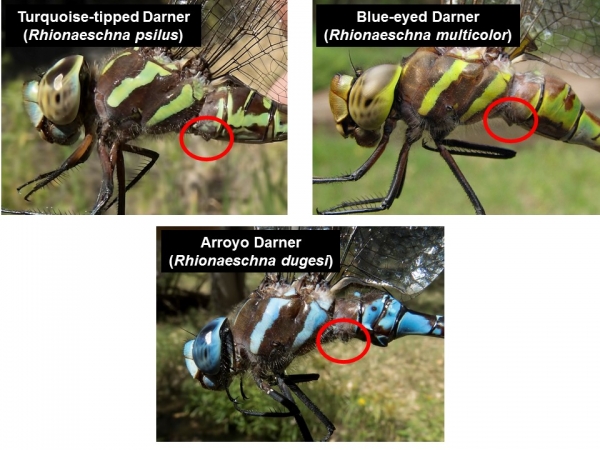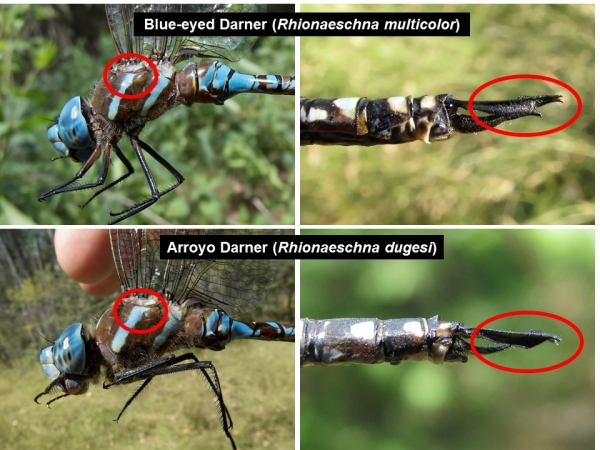Arroyo vs Blue-eyed Darner
-
Rhionaeschna dugesi
-
Rhionaeschna multicolor
Comparison (male & female)
Neotropical darners (genus Rhionaeschna) include five North American species, three of which – Arroyo, Blue-eyed, and Turquoise-tipped Darners – are found in Arizona. The genus is typified by the presence of a small tubercle, present in both sexes, under the first abdominal segment – see picture.
The Turquoise-tipped Darner (R. psilus) differs sufficiently in size (smaller) and coloration from the other two species that its identification normally poses no problem. However, the Blue-eyed (R. multicolor) and Arroyo (R. dugesi) Darners are quite similar. The Blue-eyed Darner is generally more common than the Arroyo Darner and is found throughout Arizona and neighboring states whereas the Arroyo Darner has been recorded only in the southeast corner of the state. Adding to the difficulty of identifying the two species, however, they occupy partly overlapping habitats and both can in fact be found flying at a same site.
As illustrated below, two main differences separate the Arroyo and Blue-eyed Darners:
Lateral thoracic stripes (males and females):
- Blue-eyed Darner: generally, straight
- Arroyo Darner: anterior stripe has a rearward-pointing extension.
Male appendages:
- Blue-eyed Darner: upper appendages (cerci) clearly forked
- Arroyo Darner: upper appendages not forked.



